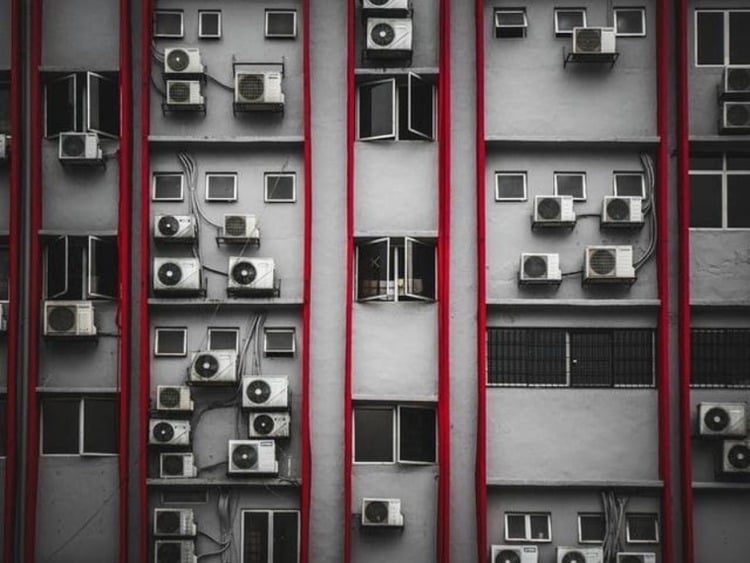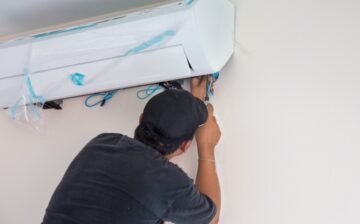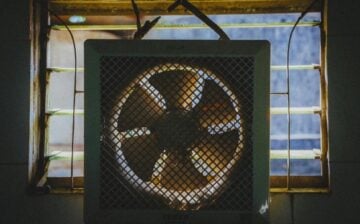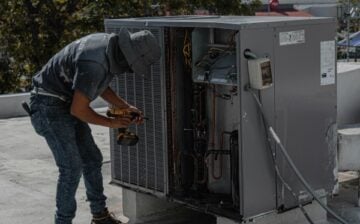
With warmer months on their way, you may be searching for a way to escape the heat before your electricity bills soar up to the roof. As a homeowner, you’ve probably reached the point where you’ve realized just how vital air conditioning systems (read more) are. Not only do they keep your homes at the right temperature and humidity levels, but they also enhance the air quality they circulate. Because of this, air conditioners are installed in almost every home in the United States, accounting for nearly 75% of all residential units therein.
However, the truth is that AC systems are expensive and can eat up a big chunk of your household appliance budget. As a result, depending on the type of AC system you choose to install, your home’s cooling, comfort, and energy consumption may differ significantly. In some cases, HVAC systems may not be a good fit for your home, while some may be the best option in others. So here, we’ve put together a list of some types of AC available when it comes to selecting one.
Types Of A/C Systems
1. Window-Type Aircon
As the name implies, a window-type aircon is designed to fit inside a window. They are available in various sizes and built to suit a wide range of window types. Typically, the larger the unit, the greater the cool air they provide. However, window-type air conditioners have restricted cooling power due to their compact size and fixed location (so most likely, there might be hot spots).
Nevertheless, they are ideal if you live in a small house or a dorm, as they don’t take up additional floor space. At the same time, if you’re thinking about moving out in the next few years, a window-type aircon is particularly suitable for non-permanent residences because they can be easily re-installed virtually anywhere.
Another thing to note, their purchase price is reasonable, and they are also affordable when operated monthly. So if you want to stay cool during the warm season without having to spend a lot, a window air conditioning unit might be the best option for you. Not to mention, they’re the easiest to install!
2. Central Air Conditioner
Central Aircon is designed to cool an entire house with multiple rooms simultaneously while being energy-efficient and effective in evenly distributing the air to maintain a consistent temperature throughout the house. As a result, installing central air conditioning systems is more practical for those living in large homes than installing multiple stand-alone units like a window aircon. Furthermore, they require less maintenance (but it is still a must). At the same time, they operate quietly too.
Doing the installation yourself is not impossible, but it is definitely not recommended. You might be creeping under your house, lifting heavy equipment, plastering, and a lot more physically demanding tasks. You can get a Weathermakers AC installation service because doing it yourself may increase the likelihood of faulty installation and insufficient maintenance. Also, the installation might need the right set of equipment that only a qualified HVAC professional can have. Therefore, this is something that you should leave to the experts.
3. Ductless Mini-Split
According to experts, a typical air duct system loses more than 30 percent of the energy by your heating and cooling system. Therefore, mini-split systems are more energy-efficient because they have little or no ductwork and avoid the energy losses associated with central forced air systems. There’s no room for leaks, cracks, and holes since it is ductless. As a result, a ductless mini-split system can circulate cleaner, cool air throughout your home.
But remember to consider the size and location of a ductless mini-split when installing one; if it is installed incorrectly, short cycling can occur, leading to inefficient temperature and humidity control. It might waste energy, in turn.
Nevertheless, a ductless mini-split is a more cost-effective option for homes that do not have existing ductwork, such as those with a garage. At the same time, they are easier to install since mini-splits are explicitly designed to cool a specific room without the need for additional construction. As an alternative, you can combine up to 5 indoor units with a single outdoor unit, in which you can individually control the temperature settings.
We hope you found this blog post on Installing And Repairing Your St. Petersburg FL Air Conditioning System useful. Be sure to check out our post on Is Your AC System Safe from Brownouts and Power Surges? for more great tips!
Have Experience in the Moving Industry? Want an Additional Income Stream? Work With All Around Moving!
Put your experience and drive to good use. Profit as a moving consultant, we’ll help you earn extra income. Click here to learn more.





